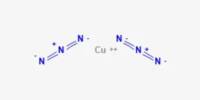An organic solar cell (OSC) or plastic solar cell is a type of photovoltaic that uses organic electronics, a branch of electronics that deals with conductive organic polymers or small organic molecules, for light absorption and charge transport to generate electricity from sunlight via the photovoltaic effect. It is a type of solar cell that uses organic materials to convert sunlight into electricity. It is also known as organic photovoltaic cells or organic photovoltaics (OPVs). The majority of organic photovoltaic cells are polymer solar cells. Organic solar cells, as opposed to traditional inorganic solar cells (such as silicon-based solar cells), absorb and convert light energy using organic semiconductors made from carbon-based materials.
Organic solar cell molecules are solution-processable at high throughput and inexpensive, resulting in low production costs for large volumes. Organic solar cells, when combined with the flexibility of organic molecules, have the potential to be cost-effective for photovoltaic applications.
Key features of organic solar cells include:
- Thin-film and lightweight: Organic solar cells can be fabricated as thin and flexible films, making them suitable for applications in various form factors, including rollable and wearable devices.
- Low-cost manufacturing: Organic materials can be solution-processed, allowing for potentially lower production costs compared to traditional silicon solar cells, which require more complex and energy-intensive manufacturing processes.
- Tunable absorption: The absorption spectrum of organic materials can be easily tuned by modifying their chemical structure, allowing for optimization to specific parts of the solar spectrum.
Despite their advantages, organic solar cells currently face some challenges:
- Efficiency: The power conversion efficiency of organic solar cells has been improving over the years, but it is still lower than that of silicon-based solar cells. This limits their widespread adoption for large-scale electricity generation.
- Stability: Organic materials can degrade more quickly than inorganic materials, especially when exposed to moisture, oxygen, and UV radiation. Researchers are working to improve the stability and lifetime of organic solar cells.
- Scaling up: While organic solar cells are easily produced on a laboratory scale, scaling up production while maintaining efficiency and cost-effectiveness remains a challenge.
Despite these obstacles, organic solar cells show promise in niche applications such as wearable electronics, IoT devices, and portable electronics, where their lightweight and flexibility can provide distinct advantages. Efforts to improve their efficiency, stability, and overall performance are continuing, making them a more competitive option for clean energy generation.
Molecular engineering (for example, changing the length and functional group of polymers) can alter the band gap, enabling electronic tunability. Because organic molecules have a high optical absorption coefficient, a large amount of light can be absorbed with a small amount of material, typically on the order of hundreds of nanometers. When compared to inorganic photovoltaic cells such as silicon solar cells, the main disadvantages of organic photovoltaic cells are low efficiency, low stability, and low strength.
















